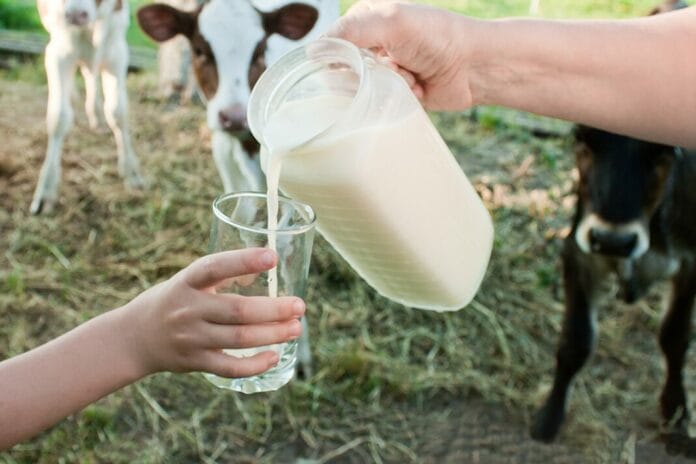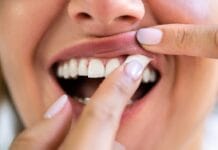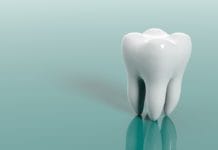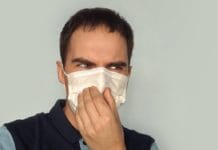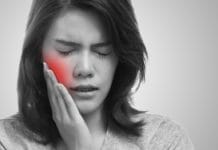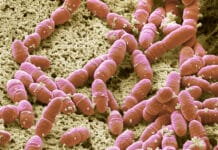A few years ago, I wrote an article about dangerous misinformation and disinformation inspired by the book Cure Tooth Decay: Heal and Prevent Cavities with Nutrition. This book suggests some dangerous behaviors, and this misinformation has spread rapidly. Recently, one of the suggestions in the book has started to resurface, and it is quite a dangerous trend to consume raw bovine (cow) milk.
I was astounded to see dental offices supporting the idea of consuming and/or swishing raw bovine milk for oral health.1,2 First, I think it is imperative to recognize that bovine milk products can potentially have protective effects against decay-causing bacteria. However, it does not have to be “raw” bovine milk. Pasteurized bovine milk provides the same benefits with less risk.3
Additionally, although dairy products have some caries-prevention properties, there is also a risk of caries development due to lactose. Lactose is less cariogenic than other carbohydrates, yet it is still fermentable.3
Unfortunately, I cannot give details on why the book’s author believes raw bovine milk is superior to pasteurized milk because I refuse to support the book by purchasing it. Nonetheless, plenty of information can be gathered online to deduce the possible thought process.
Since the book’s author based his writings on Weston Price’s research, the Weston A. Price Foundation is a good place to seek clarification.4
Claims About Oral Health Benefits of Raw Milk
Multiple claims about raw bovine milk are either untrue or lack context. These claims are dangerous, and dental professionals should not encourage the use of raw bovine milk as a preventive or remineralization agent for dental caries.
To combat this misinformation, I want to highlight some of the claims and provide evidence of how or why they are untrue.
“Pasteurized bovine milk is difficult to digest.”
The first claim I want to tackle is that raw bovine milk is better for those with lactose intolerance. The specific claim is that the heating process of pasteurization destroys enzymes that would otherwise “assure complete assimilation” into a food that is difficult to digest.4
Indeed, raw bovine milk has a bacteria that creates lactase (an enzyme that breaks down lactose), which would seem beneficial to those who are lactose intolerant. This bacterium is eliminated during the pasteurization of milk, which leads to the enzyme being eliminated.5
Though this may make many believe that raw bovine milk is better suited for lactose intolerant individuals, a randomized controlled trial found no difference in digestive symptoms in humans who were lactose intolerant when ingesting raw bovine milk or pasteurized bovine milk.5
“Raw milk has more nutrients and contains beneficial enzymes.“
One of the claims associated with raw bovine milk is that the pasteurization process causes a loss of nutrients.1,4
A systematic review and meta-analysis evaluating the pasteurization process on multiple vitamins found a reduction in vitamins B12 and E while it increased vitamin A concentrations. However, it is important to understand that milk is not an important source of vitamin B12 or E. Accordingly, the decreased concentration is negligible. On the other hand, milk is an important source of vitamin A, and since pasteurization increases the concentration, it is of no concern.6
“Raw milk is rich in minerals and casein.“
It is true that raw milk is rich in minerals and casein, but so is pasteurized milk. Studies have shown no difference in milk mineral content before and after pasteurization. Additionally, pasteurization has little impact on casein structure and only causes limited whey protein denaturation.7
The negligible changes in whey protein during pasteurization are not enough to make a significant difference in the casein content of pasteurized milk.7
Dangers of Consuming Raw Bovine Milk
According to the Centers for Disease Control and Prevention (CDC), consuming raw milk can expose you to Campylobacter, Cryptosporidium, E. coli, Listeria, Brucella, and Salmonella.8
Campylobacter
Campylobacter causes a diarrheal illness called campylobacteriosis. Symptoms include diarrhea that can be bloody, fever, and stomach cramps. Some people also experience nausea and vomiting. Complications from infection include irritable bowel syndrome, arthritis, and Guillain-Barre syndrome.9,10
Though most people with Campylobacter infection get better without antibiotics, antibiotics are sometimes necessary. The most important thing to manage is dehydration. Drinking plenty of clear liquids and oral rehydration solutions is recommended.11
Cryptosporidium
Cryptosporidium is a parasite, also referred to as Crypto. Cryptosporidium infection causes cryptosporidiosis. The most common symptom is watery diarrhea.12 Other symptoms reported with cryptosporidiosis include stomach cramps, nausea, vomiting, fever, weight loss, and dehydration.13 However, some people have no symptoms at all.12
Treatment options include anti-diarrheal medications, with most healthy people recovering without further intervention. In cases requiring intervention, nitazoxanide can be used to manage the infection in healthy patients at least one year of age. This medication is not approved for use in people with compromised immune systems.14
The illness is more severe and prolonged for people with compromised immune systems infected with cryptosporidiosis. Sometimes, it is not curable, and the symptoms can return even after being resolved.14
E. Coli
Most E. coli are harmless, although some can cause diarrhea, urinary tract infections, pneumonia, sepsis, and other illnesses. Shiga toxin-producing E. coli can cause a serious health condition called hemolytic uremic syndrome. Hemolytic uremic syndrome can lead to kidney failure, permanent health problems, and, in some cases, death.15
Symptoms of E. coli infection include severe stomach cramps and diarrhea, which can be bloody or watery. If E. coli infection is suspected or confirmed, individuals should also monitor symptoms of hemolytic uremic syndrome, which include little or no urination, loss of pink color in cheeks and inside the lower eyelids, unexplained bruising or petechia rash, blood in urine, fatigue, irritability, and decreased alertness.16
Listeria
Listeriosis occurs from eating food that is contaminated with Listeria. The CDC estimates that 1600 people are infected and 260 die from Listeria infection each year in the United States.17
The two types of Listeria infections are intestinal and invasive. Intestinal illness symptoms generally occur within 24 hours and tend to last for one to three days. Symptoms are typically mild and include diarrhea and vomiting.17,18
Intestinal illness is rarely diagnosed, and most people recover without antibiotic treatment. However, antibiotics may be used for people who are very ill or at risk of becoming very ill.16 Treatment for intestinal Listeria infections includes drinking plenty of fluids to prevent dehydration.17,18
Invasive Listeria infections mean the bacteria has spread beyond the intestines. Symptoms usually start within two weeks of eating Listeria-contaminated food. Symptoms include fever, flu-like symptoms, headache, stiff neck, confusion, loss of balance, and seizures. For invasive illnesses, people are treated with antibiotics.17,18
Brucella
Brucellosis is an infectious disease caused by the Brucella family of bacteria. Brucellosis can cause a range of symptoms, including fever, sweating, malaise, anorexia, headache, joint and muscle pain, and fatigue.19
Until the appropriate treatment is received, some symptoms may come and go, including fevers, arthritis, swelling of testicles and scrotum area, endocarditis, memory loss, confusion, irritability, depression, and swelling of the liver and/or spleen.19
Treatment includes six to eight weeks of antibiotics, with the primary antibiotics of choice being doxycycline and rifampin. If you are infected with a specific strain of Brucella, RB51, you will require antibiotics other than rifampin because that strain is resistant to rifampin.19
Salmonella
Salmonella causes an estimated 1.6 million infections annually in the United States. Of those infections, 26,500 are hospitalized, and 420 are estimated to die.20
Salmonella infection symptoms begin within six hours to six days after infection. Symptoms include diarrhea, fever, and stomach cramps. Most people will recover independently, but some will need to be hospitalized. Antibiotics are usually unnecessary, although antibiotics are administered for those with severe illness or those at risk of developing severe illness.20
Certain people are more susceptible to these bacteria and parasites, including children under five, pregnant people, older adults, and those with compromised immune systems.8
In Closing
Though dairy products, including milk, possess some anticaries properties, there is no significant difference between raw and pasteurized bovine milk. However, serious health risks are associated with consuming raw bovine milk.
As health care professionals, we have a duty to advise patients of these risks and the lack of superiority in consuming raw bovine milk. Though we cannot make decisions for our patients, we can contribute to their knowledge in hopes that they will make an informed decision. By better understanding the increased risks and lack of benefits of consuming raw bovine milk, patients will have the knowledge necessary to make an informed decision.
Patients are inundated with information from various sources that are often rooted in a bit of truth, such as milk having some anticaries properties. Then, this information gets spun to imply that milk can somehow “cure” dental caries, but it must be “raw” milk. Neither of the last two assertions is true.
Nutritional counseling is well within the scope of practice for dental hygienists. Nutritional counseling isn’t meant to only focus on the foods and beverages patients should consume but should also include guidance on foods and beverages to limit or avoid. Raw bovine milk should be avoided. The benefits simply do not outweigh the risks.
Before you leave, check out the Today’s RDH self-study CE courses. All courses are peer-reviewed and non-sponsored to focus solely on high-quality education. Click here now.
Listen to the Today’s RDH Dental Hygiene Podcast Below:
References
- Can You Reverse a Cavity? (2024, August 16). Bedford Dental Group. https://www.bhdentists.com/cavity-reversal/
- Raw Milk. (2023, September 29). Apex Dental. https://apexdentaliowa.com/raw-milk/
- Shkembi, B., Huppertz, T. Impact of Dairy Products and Plant-Based Alternatives on Dental Health: Food Matrix Effects. Nutrients. 2023; 15(6): 1469. https://www.ncbi.nlm.nih.gov/pmc/articles/PMC10056336/
- 11 Dietary Principles. (n.d.). Weston A. Price Foundation. https://www.westonaprice.org/11-principles-overview/
- Mummah, S., Oelrich, B., Hope, J., et al. Effect of Raw Milk on Lactose Intolerance: A Randomized Controlled Pilot Study. Ann Fam Med. 2014; 12(2): 134-141. https://www.ncbi.nlm.nih.gov/pmc/articles/PMC3948760/
- Macdonald, L.E., Brett, J., Kelton, D., et al. A Systematic Review and Meta-Analysis of the Effects of Pasteurization on Milk Vitamins and Evidence for Raw Milk Consumption and Other Health-Related Outcomes. J Food Prot. 2011; 74(11): 1814-1832. https://www.sciencedirect.com/science/article/pii/S0362028X22128449
- Raw Milk Misconceptions and the Danger of Raw Milk Consumption. (2024, March 5). U.S. Food and Drug Administration. https://www.fda.gov/food/buy-store-serve-safe-food/raw-milk-misconceptions-and-danger-raw-milk-consumption
- Raw Milk. (2024, April 29). Centers for Disease Control and Prevention. https://www.cdc.gov/food-safety/foods/raw-milk.html
- About Campylobacter Infection. (2024, May 10). Centers for Disease Control and Prevention. https://www.cdc.gov/campylobacter/about/index.html
- Symptoms of Campylobacter Infection. (2024, May 13). Centers for Disease Control and Prevention. https://www.cdc.gov/campylobacter/signs-symptoms/index.html
- Treatment of Campylobacter Infection. (2024, May 13). Centers for Disease Control and Prevention. https://www.cdc.gov/campylobacter/treatment/index.html
- About Cryptosporidiosis. (2024, June 5). Centers for Disease Control and Prevention. https://www.cdc.gov/cryptosporidium/about/index.html
- Symptoms of Crypto. (2024, June 5). Centers for Disease Control and Prevention. https://www.cdc.gov/cryptosporidium/signs-symptoms/index.html
- Treating Crypto. (2024, June 5). Centers for Disease Control and Prevention. https://www.cdc.gov/cryptosporidium/treatment/index.html
- About Escherichia coli Infection. (2024, May 14). Centers for Disease Control and Prevention. https://www.cdc.gov/ecoli/about/index.html
- Symptoms of E. coli Infection. (2024, May 14). Centers for Disease Control and Prevention. https://www.cdc.gov/ecoli/signs-symptoms/index.html
- About Listeria Infection. (2024, August 2). Centers for Disease Control and Prevention. https://www.cdc.gov/listeria/about/index.html
- Symptoms of Listeria Infection. (2024, August 8). Centers for Disease Control and Prevention. https://www.cdc.gov/listeria/signs-symptoms/index.html
- About Brucellosis. (2024, May 2). Centers for Disease Control and Prevention. https://www.cdc.gov/brucellosis/about/index.html
- Salmonella. (2024, September 6). Centers for Disease Control and Prevention. https://www.cdc.gov/salmonella/index.html

